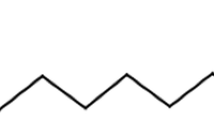Summary
1. Phospholipids and cytochrome oxidase solubilized with chotate were reconstituted either by dialysis or by dilution of the detergent. The reconstituted cytochrome oxidase vesicles oxidized ascorbate-cytochromec at a rate which was low, insensitive to energy transfer inhibitors and markedly stimulated by uncouplers of oxidative phosphorylation. The rate of reconstitution was dependent on pH, on the concentration of cholate and on the presence of high concentrations of monovalent ions or low concentrations of divalent ions. The integrity of the cytochrome oxidase vesicles was retained after freeze-drying, provided sucrose was present during the process. 2. Reconstitution with pure phospholipids revealed that cardiolipin was required for the marked stimulation of respiration by uncouplers. 3. Cytochrome oxidase vesicles were reconstituted in the presence of hydrophobic mitochondrial proteins which contained oligomycin-sensitive ATPase. The resulting vesicles oxidized ascorbate-cytochromec at a rapid rate which was not enhanced by uncouplers. Addition of an energy transfer inhibitor such as rutamycin resulted in a partial inhibition of respiration which was released by uncouplers. 4. Cytochrome oxidase vesicles reconstituted in the presence of phenol red were rather impermeable to protons and became very permeable on addition of uncouplers. When the reconstitution was performed in the presence of the hydrophobic proteins from mitochondria, proton translocation became partially sensitive to rutamycin. 5. These observations are consistent with some of the formulations of the chemiosmotic hypothesis.
Similar content being viewed by others
References
Cockrell, R. S., Racker, E. 1969. Respiratory control and K+ transport in submitochondrial particles.Biochem. Biophys. Res. Commun. 35:414.
Hinkle, P. C., Kim, J. J., Racker, E. 1972. Ion transport and respiratory control in vesicles formed from cytochrome oxidase and phospholipids.J. Biol. Chem. 247:1338.
Kagawa, Y., Kandrach, A., Racker, E. 1972. Partial resolution of the enzymes catalyzing oxidative phosphorylation. XXVI. Specificity of phospholipids required for energy transfer reactions.J. Biol. Chem. (In press).
Kagawa, Y., Racker, E. 1966. Partial resolution of the enzymes catalyzing oxidative phosphorylation. IX. Reconstruction of oligomycin-sensitive adenosine triphosphatase.J. Biol. Chem. 241:2467.
Kagawa, Y., Racker, E. 1971. Partial resolution of the enzymes catalyzing oxidative phosphorylation. XXV. Reconstitution of vesicles catalyzing32Pi-adenosine triphosphate exchange.J. Biol. Chem. 246:5477.
Lee, C.-P., Ernster, L. 1966. The energy-linked nicotinamide nucleotide transhydrogenase reaction: Its characteristic and its use as a tool for the study of oxidative phosphorylation.Biochim. Biophys. Acta 7:218.
Livne, A., Racker, E. 1969. Partial resolution of the enzymes catalyzing photophosphorylation. VI. Interaction of coupling factor 1 from chloroplasts with a new coupling factor for photophosphorylation.J. Biol. Chem. 244:1339.
McCarty, R. E., Racker, E. 1967. Partial resolution of the enzymes catalyzing photophosphorylation. II. The inhibition and stimulation of photophosphorylation by N, N′ dicyclohexyl carbodiimide.J. Biol. Chem. 242:3435.
Mitchell, P. 1966. Chemiosmotic Coupling in Oxidative and Photosynthetic Phosphorylation. Glynn Research Ltd., Bodmin, Cornwall.
Mitchell, P. 1967. Proton translocation phosphorylation in mitochondria chloroplasts and bacteria: Natural fuel cells and solar cells.Fed. Proc. 26:1370.
Racker, E., Horstman, L. L. 1972. Mechanism and control of oxidative phosphorylation.In: Energy Metabolism and the Regulation of Metabolic Processes in Mitochondria. M. A. Mehlman and R. W. Hanson, editors. p. 1. Academic Press, Inc., New York.
Racker, E., Kandrach, A. 1971. Reconstitution of the third site of oxidative phosphorylation.J. Biol. Chem. 246:7069.
Author information
Authors and Affiliations
Rights and permissions
About this article
Cite this article
Racker, E. Reconstitution of cytochrome oxidase vesicles and conferral of sensitivity to energy transfer inhibitors. J. Membrain Biol. 10, 221–235 (1972). https://doi.org/10.1007/BF01867856
Received:
Issue Date:
DOI: https://doi.org/10.1007/BF01867856




